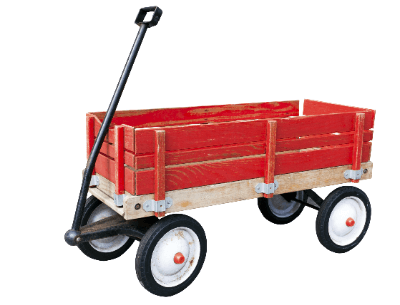What Is a Carrier?

Carriers are vehicles designed for the transportation of materials, crops, and goods. Their load capacity varies based on their design, ranging from small manually operated models to larger, engine-driven vehicles capable of road travel with a seated driver.
Applications of Carriers
Widely utilized in construction sites, agricultural fields, and livestock farms, carriers enhance work efficiency by reducing the trips required to transport materials between locations. Available in various configurations, carriers can feature tiltable beds for easy unloading of materials like earth and sand, and come in both manual and engine-driven models. Specialized carriers, including those with lift-equipped cargo beds and those made of stainless steel, cater to specific transportation needs, such as compost hauling under harsh conditions.
Operating Principles
Carriers operate using either a crawler or wheel drive system:
- Crawler: Featuring an infinite track, this type excels on uneven terrains, such as construction sites and farmland, providing stability on slopes and unprepared surfaces.
- Wheel Drive: Wheel-driven carriers offer enhanced maneuverability, making them ideal for narrow or confined spaces where quick movement is required.
Designs of Carriers
The design of a carrier’s bed significantly influences its load capacity:
- Flat Body: With no roof and a flat bed, this design accommodates tall loads but requires protection against the elements and securement for safe transport.
- Van Body: Enclosed with aluminum, van bodies protect cargo from weather, making them popular for commercial use and valuable in disaster response scenarios.
- Refrigerated and Freezer Trucks: Insulated to maintain low temperatures, these vehicles are essential for transporting perishable goods while preserving freshness.
- Wing Body: Featuring sides that open like wings, these vehicles facilitate easy loading and can transport a diverse range of cargo sizes efficiently.
- Towing Truck: Specialized for hauling large quantities on articulated trailers, offering high transport efficiency.
- Special Work Vehicles: Equipped with specific functions for specialized tasks, enhancing their utility in various industries.
Categories of Carriers
Carriers are classified by size into:
- Light-Duty Trucks: Vehicles under specific dimensions and with a maximum load capacity of up to 3,000 kg, suitable for smaller transport tasks.
- Medium-Duty Trucks: With dimensions and load capacities that bridge the gap between light and heavy-duty vehicles, ideal for a wide range of transportation needs.
- Heavy-Duty Trucks: Designed for the heaviest loads, requiring specialized licenses due to their size and capacity.